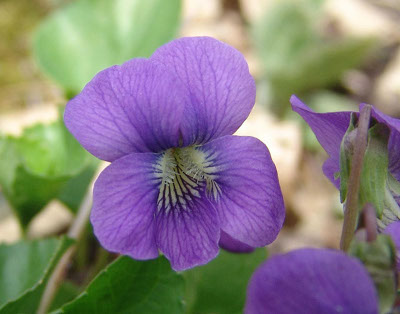Viola Flower Plant
Category: Perennials

Facts about Viola Flower (Plant), (Viola spp.). Viola Flower (Plant) belongs to the family Violaceae, it includes about 500 species of perennials, Viola (Viola spp.) sub-shrubs and annuals that are found all over the worlds temperate zones that range from mountains to subarctic zone of New Zealand. Viola Flower (Plant) is quite popular with the gardeners as they are used in a number of ways, the violets fragrance have long been a favorite in the perfume industry, though nowadays more cost-effective synthetics have replaced natural oil.
Physical Description of Viola Flower (Plant)
Viola Flower (Plant) has heart-shaped, yet scalloped leaves. Though a number of the species have palmate leaves and are mostly herbaceous. The flowers of a majority of Viola species are zygomorphic and with bilateral symmetry. Viola Flower are formed from 5 petals and four of them are fan-shaped or up-swept with a pair per side then there is one that is broad and low and pointing downwards. The shape of Viola’s plant petals and the placement will define its many species.
The Viola Flower (Plant) color will vary with genus, and will range from yellow to shades of blue, to white and cream.
Cultivation of Viola Flower (Plant)
Viola Flower (Plant) are tough and adaptable to most conditions, they are natural woodland plants. They can easily be grown in shade or sun, but it will thrive in a semi-shade environment. The Viola Flower (Plant) does pretty well in moist soil that is rich in humus.
Weed control
Not all the species of Viola plants are desired, like in North America some wild violets are considered as weeds though others tolerate their presence in lawns. The Violets will thrive in part shade and not susceptible to most of the herbicides that are used to kill the common weeds.
Uses of Viola Flower (Plant)
When the Viola flowers are newly opened they can be used to decorate the salads in stuffing for fish or poultry. Its young leaves are edible either cooked or raw. Most of the Viola Flower (Plant) Species do contain antioxidants known as anthocyanins. The Violet is known to have a flirty scent hence used in the perfume industry.

 Back To Category Perennials
Back To Category Perennials